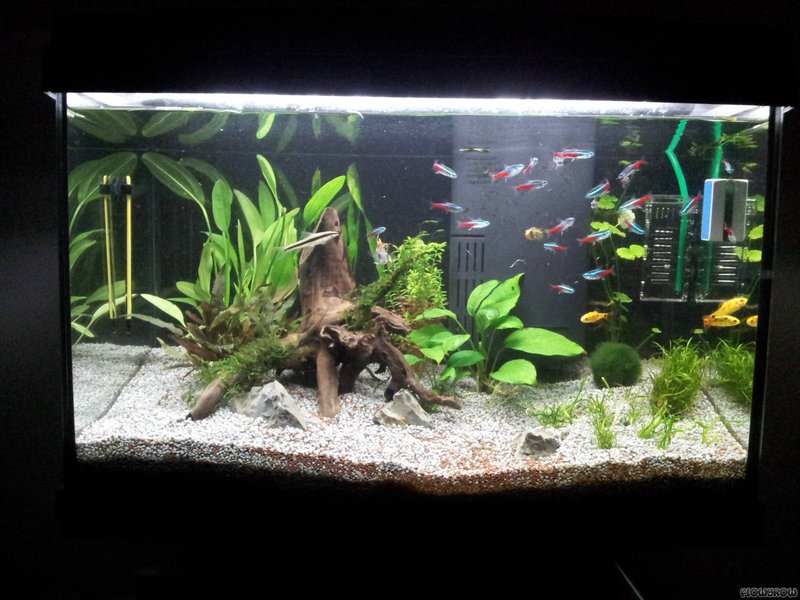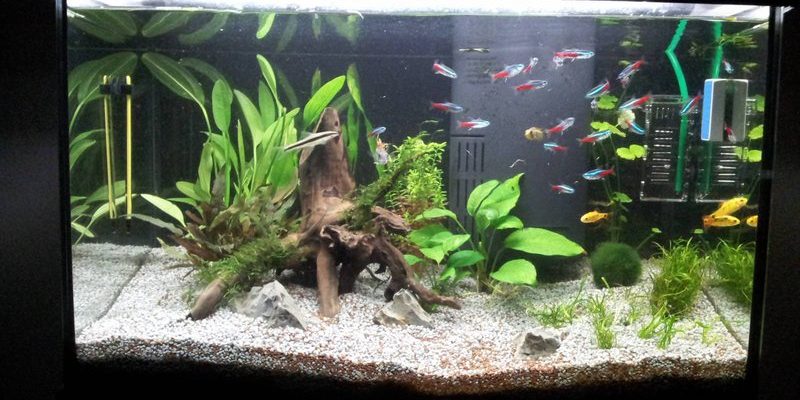
So, what’s the best tank setup for tetras? It revolves around tank size, water conditions, and decor. Imagine your tank as a tiny world where everything needs to come together—just like a well-loved living room, complete with comfy furniture and the right lighting. Let’s dive in and explore what you need to create that perfect home for your tetras.
When it comes to tank size for tetras, bigger is almost always better. Tetras are schooling fish, which means they thrive in groups. The general recommendation is to have at least 10 gallons for a small school of tetras, say around six or seven. Think of it like a cozy café where you wouldn’t want your friends squished together at a tiny table. More space lets them swim freely and interact without stress.
Using a larger tank not only provides ample swimming room, but it also helps maintain water quality. In smaller tanks, waste can build up quickly, making it tough for your fish to stay healthy. A larger volume of water keeps things more stable. So, if you’re thinking about getting tetras, opt for at least 20 gallons if you can.
Water quality is a big deal in any fish tank, and tetras are no exception. They prefer slightly acidic to neutral pH levels, usually around 6.0 to 7.5. This is like making sure the temperature of a warm bath is just right—not too hot or too cold, but comfortable.
Temperature is key, too! Tetras thrive best in warmer waters, ideally between 72°F and 78°F. You might be wondering, how do I monitor all this? A good water test kit is a must-have. It helps you keep tabs on pH, ammonia, nitrites, and nitrates. Consistency is crucial here; sudden changes can stress your fish.
Regular water changes—about 20% to 25% weekly—will help keep the conditions in check. Just like how you’d clean and freshen up a room, routine maintenance is the key to a happy tank.
Now, let’s talk about tank decor! Tetras love a bit of shelter where they can hide and feel secure. Think of it like furnishing a room with comfy couches and curtains—these little cozy spots make all the difference. You might want to include plants, driftwood, and rocks. Just make sure these items don’t have sharp edges that could harm your fish.
Live plants are a great addition, as they provide cover and help with water quality by absorbing nitrates. Anubias and Java fern are excellent choices, as they’re hardy and easy to care for. If you prefer plastic plants, make sure they’re well-made and free of any rough spots.
Another fun idea? Consider adding a few caves or tunnels from ceramic or stone. Tetras enjoy exploring, and these little hideaways can become their favorite hangout spots.
If you want to add more life to your tank, selecting compatible tank mates is essential. Tetras are usually peaceful fish, so it’s best to keep them with other non-aggressive species. For example, guppies, neon tetras, and otocinclus are all great partners.
It’s crucial to avoid larger or aggressive fish, as they may stress or even harm your tetras. A good rule of thumb is to keep them with fish that have a similar temperament and size. Picture a harmonious dinner party where everyone gets along—that’s the vibe you want in your tank!
When introducing new fish, it’s a good idea to quarantine them first. This is like giving newcomers a welcome mat before they join the gathering—ensuring they’re healthy and won’t bring any unwanted surprises.
Aquascaping is the art of arranging plants, rocks, and other decorations in your aquarium to create a stunning underwater landscape. It’s a chance to let your creativity shine! It’s like decorating your home; you get to express your style while also considering the needs of your fish.
When aquascaping for tetras, think about open swimming areas combined with plants and hiding spots. Use a mix of foreground, midground, and background plants to create depth. Larger items like driftwood can be positioned off to the side for a nice focal point, making it visually appealing while serving as a safe spot for your tetras.
Don’t forget about substrate! A soft, fine sand or gravel is ideal as it mimics their natural habitat. Some tetras like to scavenge for food on the bottom, so having a comfortable substrate can make a big difference.
Lighting plays a significant role in creating an inviting environment for your tetras. It should mimic natural daylight without being too harsh. LED lights are a popular choice as they’re energy-efficient and offer a variety of brightness levels.
Tetras enjoy a 12-hour light cycle, so having a timer can help maintain consistency. This is like setting a regular bedtime—keeping things predictable helps your fish feel secure.
When lighting your tank, consider how it illuminates the plants and decorations too. Proper lighting enhances colors and can create a beautiful, shimmering effect in the water. Just remember, too much light can encourage algae growth, which is like letting clutter pile up in your living space—nobody wants that!
Caring for your tetra tank involves easy, regular maintenance to ensure everything stays in tip-top shape. As mentioned, weekly water changes are essential. But that’s not all! You’ll want to check your filtration system to make sure it’s clean and functioning properly.
Cleaning any uneaten food or waste is crucial, too. It’s similar to tidying up after a meal: you want to keep the space pleasant and healthy. A good aquarium vacuum can help you easily remove debris from the substrate without disturbing your fish too much.
Also, keep an eye on the temperature and pH levels. A quick daily check can prevent any potential issues. Think of yourself as a caretaker of a little underwater world—your attentive care will pay off in vibrant, happy fish.
By creating an ideal tank setup for your tetras, you’re giving them the best chance to thrive and bring joy to your life. Plus, it’s incredibly rewarding to watch them flourish in a well-thought-out environment. So, roll up your sleeves, gather your supplies, and start building that little aquatic paradise!

